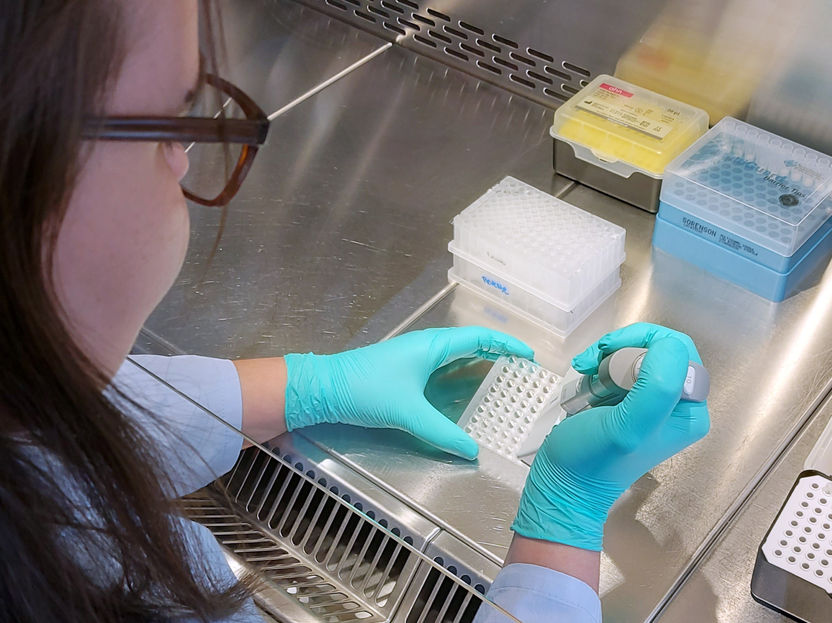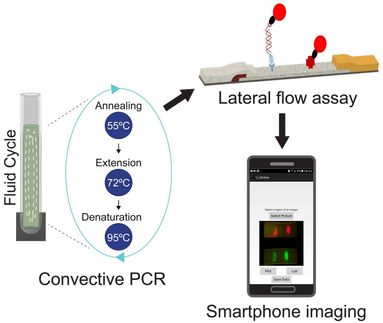Simplified screening of individual bacterial species in biosamples
Method saves time and costs when analysing complex microbiological samples
Advertisement
In medical research and diagnostics, the microbiome, i.e. the microbial colonisation of the intestine, is increasingly gaining attention. A stool sample can be used to precisely analyse the complex microbial ecosystem of the gut. There are basically two methods for this: traditional cultivation on plates with specific culture media or the quite expensive DNA analysis of the stool sample. Both methods on their own are unsatisfactory when it comes to quickly detecting a certain bacterial species in the sample. Researchers from the research training group (RTG) Translational Evolutionary Research (TransEvo) at Kiel University (CAU) have developed a rapid and robust screening method in order to specifically detect and cultivate lactobacilli, bifidobacteria and Bacteroides in stool samples. They published the results in the journal Current Microbiology. "Our method is less expensive and faster than alternative methods usually used to isolate and identify bacteria in complex microbiological samples," explained first author Sofia Borges, a PhD student at the Department of Microbiology and Biotechnology at the Max Rubner-Institut in Kiel. "The method is particularly suitable for screening for certain bacterial species for which there is no exclusive culture medium," added Professor Charles Franz, head of the institute and Associate Professor at the Faculty of Agricultural and Nutritional Sciences at Kiel University. "With this method, we are saving ourselves lengthy procedures for singling out pure bacterial species from potentially non-pure colonies and identifying them."

Preparing samples for the PCR analysis.
© Maria Stein, MRI
Bacterial culture is often not selective
Bacterial culturing is the cultivation of microorganisms on a culture medium under controlled conditions, such as temperature. The culture medium that is selected depends on which bacterial species you are looking for in the sample. Selective growth media promote the growth of specific species, while the growth of other species contained in the sample is inhibited. If the species you are looking for is in the sample, it will grow into a colony. That is the ideal scenario. However, the culture media are often not exclusively selective for only one species, but also allow a few other bacterial species to grow.
"In this study, we focused on bifidobacteria, lactobacilli and Bacteroides," said Borges. Bifidobacteria and lactobacilli were chosen because they are relevant to gut health, but are usually not found in large numbers in the intestine. Therefore, even with partially selective media, it is sometimes not possible to cultivate these bacteria. Bacteroides were included in the study as an example of a gram-negative species that is also relevant for gut health and is being further studied by the co-authors of the study.
Detection of pure colonies despite lack of purification
The principle of the method is based on cultivation using three different selective media, DNA extraction, PCR analysis of a specific gene and sequencing. Six stool samples from healthy individuals were used to test this method. Cultivation took place in an anaerobic chamber (without oxygen) for 48 hours at 37 degrees Celsius. Afterwards, well-separated individual colonies were selected for the isolation of the bacteria. The individual colonies were examined according to the study protocol. It was possible to identify the bacterial species contained in all 180 colonies. Most colonies could be assigned to a single species, even though the selective media used not only favoured the growth of the target bacteria but also allowed a few other species to grow. "Some of our colonies contained up to three different species of bacteria. However, we were pleasantly surprised to find that most colonies were pure, despite minimal cultivation and no purification by repeatedly streaking out colonies," explained Borges.
Her working group leader Charles Franz summed up as follows: "Our new method makes it possible to gain insight into the purity of the colonies present on agar plates and to accurately identify the bacteria they contain. It can therefore be useful in providing a speedy, cost-effective and robust overview of bacteria recovered from complex microbiological samples before selecting them for further study."
Original publication
Other news from the department science
Most read news
More news from our other portals
See the theme worlds for related content
Topic World PCR
This groundbreaking and highly versatile molecular technique of PCR allows us to amplify tiny amounts of genetic material on a large scale and analyze them in detail. Whether in medical diagnostics, forensic DNA analysis or research into genetic diseases - PCR is an indispensable tool that gives us deep insights into the world of DNA. Immerse yourself in the fascinating world of the polymerase chain reaction (PCR)!

Topic World PCR
This groundbreaking and highly versatile molecular technique of PCR allows us to amplify tiny amounts of genetic material on a large scale and analyze them in detail. Whether in medical diagnostics, forensic DNA analysis or research into genetic diseases - PCR is an indispensable tool that gives us deep insights into the world of DNA. Immerse yourself in the fascinating world of the polymerase chain reaction (PCR)!






















































